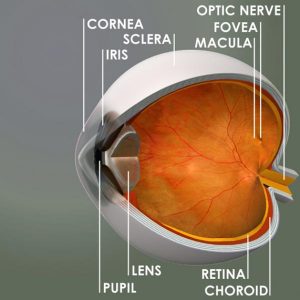The lens is a dense, transparent structure made of proteins, located just behind the iris and pupil. Its curvature and density cause light waves to bend as they travel through the lens. After passing through the lens, the light waves converge and project an inverted image on the retina. The retina changes the light waves to electric impulses that then travel along the optic nerve to the brain. This entire series of events results in a visual and understandable representation of light and color.
The lens also changes shape in order to focus on objects at various distances. The older one becomes, the stiffer and more inflexible the lens becomes. Oftentimes, the lens becomes so stiff that it cannot change its shape sufficiently to accommodate both images of objects up close and far away. This is why the need for bifocals or reading glasses are common as people age.
New, thin layers continually grow over old layers of the lens. These layers of cells grow inward from the edges but never form in the center of the lens. If the cells at the center of the lens grow cloudy, cataracts develop. Natural lenses can be replaced with artificial lenses in a relatively fast and easy surgical procedure, making cataracts an easily treatable disease.
